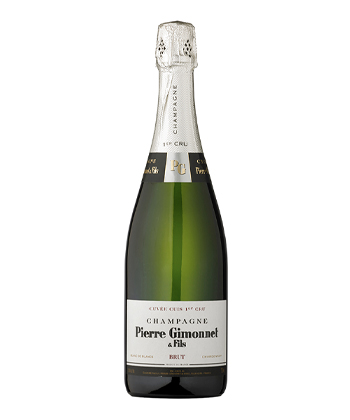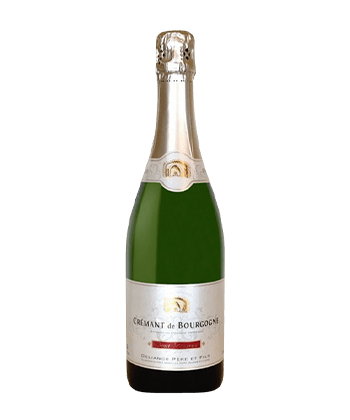Champagne needs no introduction. When it comes to sparkling wine, it’s the undisputed winner; the go-to option for celebrations from birthdays to weddings and everything in between.
But it’s also the undisputed champion when it comes to price. A great bottle of Champagne can easily run you over $100, even in a retail setting, while sipping the French bubbly in a restaurant is even more expensive. But even in a luxury niche like Champagne, there are ways to get a good deal. We asked 10 sommeliers what bang-for-your-buck Champagnes and other sparklers they recommend. Here’s what they said.
The Champagnes (and Some Others) That Offer the Best Bang for Your Buck
- Louis de Sacy Brut Grand Cru Champagne
- Champagne Ayala Brut Majeur
- A. Levasseur ‘Rue du Sorbier’ Brut
- Pierre Gimonnet et Fils Blanc de Blancs Cuis Premier Cru Brut
- Champagne Drappier
- Deliance Crémant de Bourgogne Brut
- Paul Laurent Cuvée du Fondateur Brut
- Dhondt-Grellet ‘Dans Un Premier Temps’ Brut
- Pierre Peters Cuvée de Reserve Blanc de Blancs
- Domaine Carneros
- Roederer Estate
- Christian Etienne Cuvée Tradition Brut
“Louis de Sacy Grand Cru Champagne is just about $30. It’s a delicious Champagne with notes of toast, brioche, and almond. It’s perfect with everything from oysters to a casual Tuesday night roasted chicken dinner.” —Amy Racine, beverage director, North Fork Table & Inn, Southold, N.Y.
“Champagne Ayala Brut Majeur always delivers a consistent style with bright notes of fresh citrus and an impeccable lightness on the palate that is incredibly delicious with fresh seafood. In my market (Chicago), I find the wine is readily available, and often at a great price.” —Kevin Bratt, divisional beverage director, Joe’s Seafood, Prime Steak & Stone Crab, Chicago
“A new and quickly rising star in the world of Champagne is that of David Levasseur, the now third generation of the eponymous estate working out of the Valle de Marne. The ‘Rue de Sorbier’ represents the entry to the Levasseur wines at a remarkable value, a bottling which is Pinot Meunier-dominant with a thoughtful three years on the lees. This is a decadent and generous Champagne which is brimming with white cherries and apricot. The doughiness from lees aging adds a perfect backdrop to the wine, finishing with a mineral bite and just a touch of residual sugar.” —Sam Bogue, wine director, Flour + Water Hospitality Group
“Finding value in Champagne can be very difficult; it is a land of very expensive wine. I tend towards the smaller producers, known as the recoltants (look for the RM initials on the lower corners of the bottle). The wines tend to have a lot of character and tend not to compete fiscally with the larger estates. My personal favorite producer is an all-Chardonnay gem from the Côte des Blancs made by Pierre Gimmonet and titled ‘Cuis 1er Cru.’” —Richard Hanauer, partner and wine director, RPM Restaurants, Chicago, Washington D.C., Las Vegas
“I find that Drappier offers significant value of a ‘Grower Champagne’ style coming from that family-run ‘House Champagne’ and producing fully organic (now), carbon-neutral, and low-sulfur, too. The Pinot-dominant house is located in the Aube closer to Chablis than Reims. This gives the wines a very bright mineral clarity while offering a richer style with lots of stone fruit and dark fruits.” —John Mckenna, beverage director, l’abeille, NYC
“The best sparkling wine for your buck lies is Crémant. You get everything you love about Champagne — the brioche, bread dough, full bodied, small bubbles — without breaking the bank. Crémant is the general term for sparkling wines from France that don’t come from Champagne, but [are] still made in the same process and aged. You can find an excellent option, Domaine Deliance, at the Rex Bottle Shop for under $30.” —Nick Baitzel, director of operations, Sojourn Restaurants, Philadelphia
“At less than $40 a bottle retail and $22 wholesale, Paul Laurent ‘Cuvée de Fondateur’ Brut Champagne offers a bright palate with notes of lemon curd, yellow apples, and pears. A rich yet delicate and velvety textured with persistent bubbles.” —Irene Justiniani, sommelier, Pastis, NYC
“The concept of value in a region like Champagne, so generously filled with opportunities to push the boundaries of intellectual stimulation and full-body engagement, should arise often for those who pursue it with passion. While there are houses that show up with both quality and complexity at a moderate price (see Charles Heidsieck, Delamotte, and Louis Roederer), it’s often the racy expressions from small growers in the Côte des Blancs that are my siren call: Dhondt Grellet ‘Dans Un Premier Temps,’ Pierre Gimmonet & Fils 1er Cru Blanc de Blancs, and Pierre Peters Cuvée de Reserve always over-deliver.” —Brent Karlicek, beverage director, Postino Wine Cafe, Houston


“There are a number of sparkling wines made in California by Champagne producers that are wonderful to drink and represent excellent value. Domaine Carneros made by Taittinger has a delicious green apple freshness that I so appreciate, and Roederer Estate from Anderson Valley is bright, well-balanced and affordably priced for such an enjoyable sparkling wine.” —Dan Chapman, wine director, Addison, San Diego
“Cheap Champagne seems like an oxymoron, but there are some more affordable options out there that don’t sacrifice quality. The Christian Etienne Champagne Brut Cuvée is one of those bottles that clearly was created with a lot of care and attention but is priced very reasonably. These bubbles are made from Pinot Noir and Chardonnay grapes grown on 25-year-old vines and hand harvested. Christian Etienne is a traditionalist, managing a small, family-run winery that utilizes sustainable farming practices.” —Allie Balin, food and beverage director, Ruse, St. Michaels, Md.









